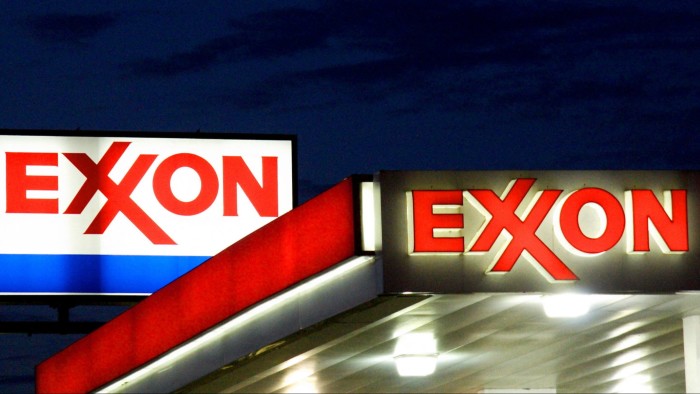Exxon and Chevron deals point to Big Oil’s needed shift

Roula Khalaf, Editor of the FT, selects her favourite stories in this weekly newsletter.
The writer is a former partner at Jana Partners and the former head of shareholder activism at Engine No. 1
In the past month, two megadeals have been launched in the oil and gas industry: the announced acquisition of Pioneer Natural Resources by ExxonMobil and Chevron’s planned takeover of Hess.
In the Pioneer deal, Exxon will become the dominant operator in the Permian Basin, the largest oilfield in the US. And in acquiring Hess, Chevron will become one of the largest producers in the Bakken Formation (and gains a foothold in Guyana, where Exxon already has a leading presence).
Both acquisitions were accompanied by triumphal announcements regarding the long-term outlook for fossil fuel demand, including Chevron’s chief executive challenging the International Energy Agency’s projections of a peak in fossil fuel demand in the next decade.
Yet the rationale for these transactions can be squared with either view of oil demand. For Exxon, in particular, expansion in the Permian offers a path to profitability even in significantly lower long-term fossil fuel demand scenarios, with estimated production costs of approximately $35 a barrel.
Permian shale patch production, which has a typically short cycle of development and exploitation, also offers the ability to flex production up and down more easily in response to changes in demand. Megaprojects, by contrast, can take up to a decade to start producing and even longer to start generating a return.
This stands in marked contrast to Exxon’s stance on capital allocation a couple of years ago, when I led a campaign with my former colleagues at Engine No. 1 to replace members of the oil group’s board. The company at that point had for years disregarded the market’s preference for focusing on value over volumes, and was instead setting capital expenditure levels by reference to market share, rather than expected returns.
As a result, its shares had underperformed those of its peers for years, even before Covid-19. In fact, Exxon had spent so heavily that at the start of 2020, the estimated oil price required for its projects to break even was close to $90, almost 50 per cent higher than its closest peers including Chevron. At the time there were also no independent directors with outside energy experience.
This is why investors were open to change. They were under no illusion that Exxon would stop investing in oil and gas; in fact, in our first letter we noted — just as Exxon’s chief executive did in announcing the Pioneer deal — that oil and gas companies must spend to offset natural decline rates. We also argued, however, that Exxon should spend more intelligently to account for long-term demand uncertainty.
Specifically, we called for focusing on projects that would deliver a rate of return well above the company’s cost of capital under a wider variety of long-term demand scenarios, and we highlighted the Permian Basin — as well as Guyana — as meeting that criterion.
This is why, despite the public debate about the direction and speed of the energy transition, the real focus for oil and gas companies will continue to be around capital allocation in a time of uncertainty.
Exxon and Chevron may be right that oil and gas demand will grow far beyond the expectations of the IEA or the hopes of citizens wishing to avoid the worst impacts of climate change. Recent events include a rise in interest rates and supply chain issues that have dented the economics of renewables while there has been minimal progress at the COP 26 and 27 summits on climate change and, most likely, COP28, starting later this month in Dubai.
Exxon is also not wrong when it says it cannot move faster than the pace of the energy transition (leaving aside the matter of its historical role in slowing this transition), as other producers would simply pick up the slack. Still, I believe that long-term investors continue to prefer Exxon to eschew a strategy of chasing market share without sufficient regard to returns, instead focusing on lower cost projects offering greater flexibility if the pace of the energy transition increases over time.
The stock market certainly does, with Exxon outperforming Chevron substantially since the former embraced a more disciplined capital allocation strategy during the proxy campaign.
With this acquisition, Exxon enhances its flexibility for the future. However, it will be up to investors to again hold the company accountable should it return to a strategy rejected not just by those focused on climate change, but those focused solely on shareholder returns as well.
Climate Capital

Where climate change meets business, markets and politics. Explore the FT’s coverage here.
Are you curious about the FT’s environmental sustainability commitments? Find out more about our science-based targets here
Comments